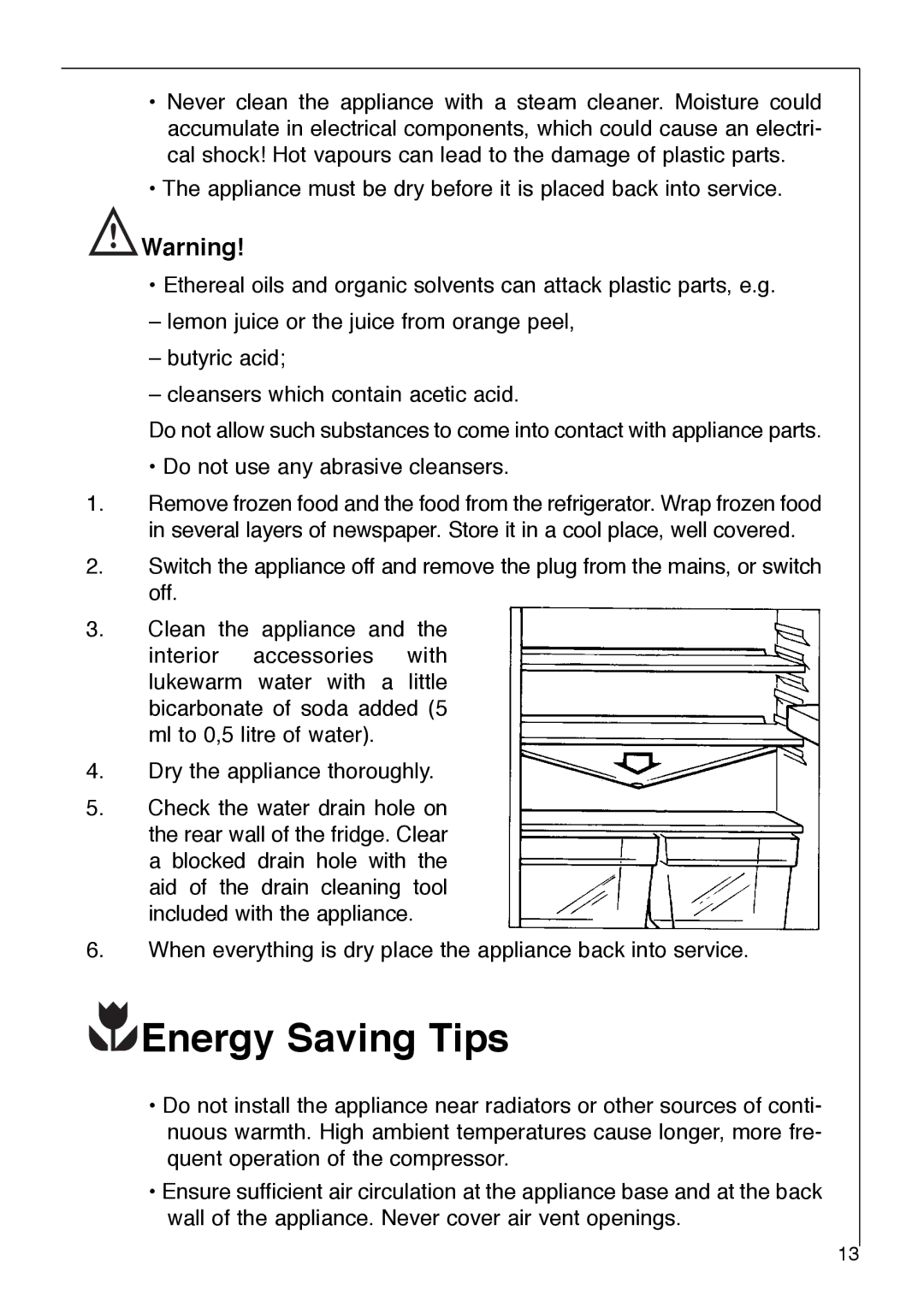SANTO 2733-6 i specifications
The Electrolux SANTO 2733-6 i is a cutting-edge refrigerator designed for modern households, offering an impressive blend of functionality, style, and energy efficiency. With a capacity of 274 liters, this refrigerator provides ample space for both fresh and frozen goods, making it ideal for families and individuals who appreciate organized storage.One of the standout features of the SANTO 2733-6 i is its NoFrost technology. This smart innovation eliminates the need for manual defrosting by ensuring that frost does not build up in the freezer compartment. This not only saves time but also helps maintain optimal energy consumption, as frost can hinder the performance of the appliance.
The refrigerator is equipped with a MultiAir Flow system that allows for consistent cooling throughout the entire unit. By distributing cold air evenly across various compartments, this technology ensures that food stays fresh longer, minimizing spoilage and waste. The fridge also features an EasyStore concept with adjustable shelves that can accommodate items of different heights, making it easy to organize and find your essentials.
In addition, the SANTO 2733-6 i boasts a sleek and modern design, available in a classic stainless steel finish that fits effortlessly into any kitchen decor. The external LED display allows for intuitive temperature control and settings adjustment, providing users with convenience at their fingertips.
Energy efficiency is a priority for Electrolux, and the SANTO 2733-6 i is no exception, boasting an A++ energy rating. This means it consumes less energy compared to standard models, contributing not only to lower energy bills but also to a more sustainable lifestyle.
Privacy and hygiene are enhanced with the antibacterial door seal that prevents the buildup of bacteria and mold, ensuring a safe environment for food storage. Additionally, the appliance features a holiday setting, which saves energy during extended periods of non-use by maintaining low temperatures in the fridge while turning off the freezer.
Overall, the Electrolux SANTO 2733-6 i embodies a perfect mix of innovation and practicality. It caters to the demands of contemporary cooking and lifestyle, making food preservation effortless and efficient while enhancing the aesthetic of any kitchen. Whether you are storing fresh produce, leftovers, or frozen meals, this appliance rises to the occasion with style and reliability.

